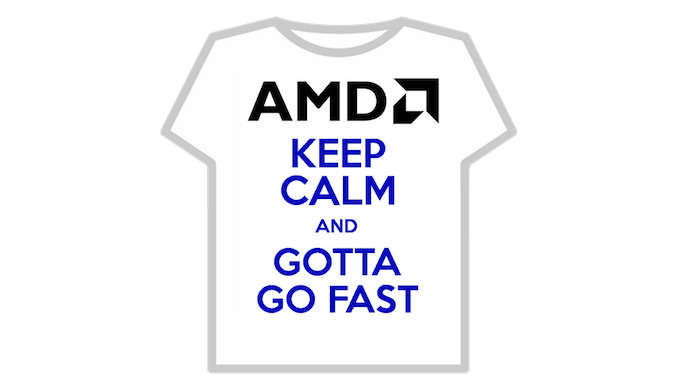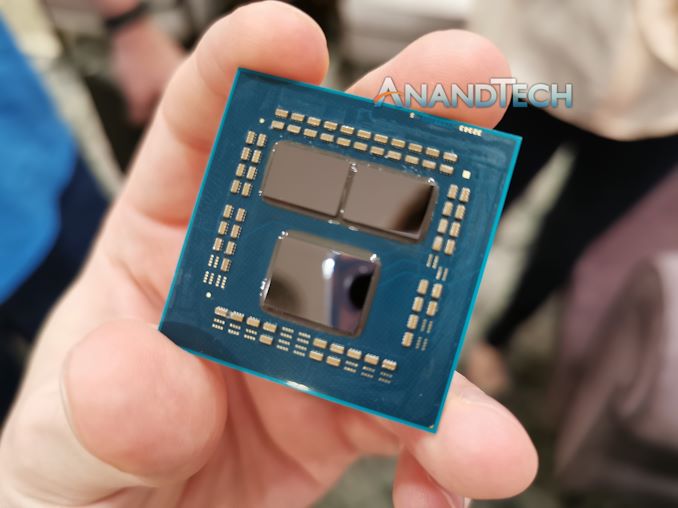Reaching for Turbo: Aligning Perception with AMD’s Frequency Metrics
by Dr. Ian Cutress on September 17, 2019 10:00 AM EST
For those that keep a close eye on consumer hardware, AMD recently has been involved in a minor uproar with some of its most vocal advocates about the newest Ryzen 3000 processors. Some users are reporting turbo frequencies much lower than advertised, and a number of conflicting AMD partner posts have generated a good deal of confusion. AMD has since posted an update identifying an issue and offering a fix, but part of all of this comes down to what turbo means and how AMD processors differ from Intel. We’ve been living on Intel’s definitions of perceived standards for over a decade, so it’s a hard nut to crack if everyone assumes there can be no deviation from what we’re used to. In this article, we’re diving at those perceived norms, to shed some light on how these processors work.
A Bit of Context
Since the launch of Zen 2 and the Ryzen 3000 series, depending on which media outlet you talk to, there has been a peak turbo issue with the new hardware. This turbo frequency issue has been permeating in the ecosystem since Zen 2 was launched, with popular outlets like Gamers Nexus noting that on certain chips, the advertised turbo frequency was only achieved under extreme cooling conditions. For other outlets, being within 50 MHz of the peak turbo frequency has been considered chip-to-chip variation, or a function of early beta firmware. A wide array of people put varying amounts of weight behind this, from conspiracy to not being bothered about it at all.
However, given recent articles by some press, as well as some excellent write-ups by Paul Alcorn over at Tom’s Hardware*, we saw that the assumed public definitions of processor performance actually differs from Intel to AMD. What we used as the default standard definitions, which are based on Intel’s definitions, are not the same under AMD, which is confusing everyone. No one likes a change to the status quo, and even with articles out there offering a great breakdown of what's going on, a lot of the general enthusiast base is still trying to catch up to all of the changes.
This confusion – and the turbo frequency discussion in general – were then brought to the fore of news in the beginning of September 2019. AMD, in a two week span, had several things happen essentially all at once.
- Popular YouTuber der8aur performed a public poll of frequency reporting that had AMD in a very bad light, with some users over 200 MHz down on turbo frequency,
- The company settled for $12.1m in a lawsuit about marketing Bulldozer CPUs,
- Intel made some seriously scathing remarks about AMD performance at a trade show,
- AMD’s Enterprise marketing being comically unaware of how its materials would be interpreted.
Combined with all of the drama that the computing industry can be known for – and the desire for an immediate explanation, even before the full facts were in – made for a historically bad week for AMD. Of course, we’ve reported on some of these issues, such as the lawsuit because they are interesting factoids to share. Others we ignored, such as (4) for a failure to see anything other than an honest mistake given how we know the individuals behind the issues, or the fact that we didn’t report on (3) because it just wasn’t worth drawing attention to it.
What has driven the discussion about peak turbo has come to head because of (1). Der8auer’s public poll, taken from a variety of users with different chips, different motherboards, different cooling solutions, different BIOS versions, still showed a real-world use case of fewer than 6% of 3900X users were able to achieve AMD’s advertised turbo frequency. Any way you slice it, without context, that number sounds bad.
Meanwhile, in between this data coming out and AMD’s eventual response, a couple of contextual discrepancies happened between AMD’s partner employees and experts in the field via forum posts. This greatly exacerbated the issue, particularly among the vocal members of the community. We’ll go into detail on those later.
AMD’s response, on September 10th, was a new version of its firmware, called AGESA 1003-ABBA. This was released along with blog post that detailed that a minor firmware issue was showing 25-50 MHz drop in turbo frequency was now fixed.
Naturally, that doesn’t help users who are down 300 MHz, but it does come down to how much the user understands how AMD’s hardware works. This article is designed to shed some light on the timeline here, as well as how to understand a few nuances of AMD's turbo tech, which are different to what the public has come to understand from Intel’s use of specific terms over the last decade.
*Paul’s articles on this topic are well worth a read:
Ryzen 3000, Not All Cores Are Created Equal
Investigating Intel’s Claims About Ryzen Reliability
Testing the Ryzen 3000 Boost BIOS Fix
This Article
In this article we will cover:
- Intel’s Definition of Turbo
- AMD’s Definition of Turbo
- Why AMD is Binning Differently to Intel, relating to Turbo and OC
- A Timeline of AMD’s Ryzen 3000 Turbo Reporting
- How to Even Detect Turbo Frequencies
- AMD's Fix











144 Comments
View All Comments
0siris - Tuesday, September 17, 2019 - link
In the end, this doesn't change anything for those of us who read reviews and decided based on those if the performance in our workloads was acceptable for the price AMD was asking. But if your marketing is going to dumb the performance down to a (set of) number(s), then you will also have to deal with the complaints of people whose understanding doesn't go beyond those simple numbers. Looks like the "bigger number!" marketing we've seen with is finally starting to hurt companies.It seems completely logical to me that boosting algorithms will become ever more refined to ensure optimal performance at all times. That's a good thing for all of us.
WaltC - Tuesday, September 17, 2019 - link
The so-called Bulldozer lawsuit was settled by the lawyers who brought the suit (not just by AMD, as is erroneously often implied), who agreed to take the money and run rather than chance the loss of their suit, ultimately, because AMD surely would have won, anyway. AMD agreed to the payout as it amounted to less money than it would have cost AMD to actually go all the way and win the suit--this is why companies settle spurious lawsuits--and is the only reason they do. Additionally, in writing, the suing attorney's agreed with AMD that AMD had done nothing wrong--no false advertising, etc. Whenever this "issue" *cough* is raised, it is never explained fully--with a sort of mindless "AMD did something wrong" emphasis. Of course, nothing about this *old* lawsuit has anything at all to do with the burst frequency issue which AMD recently corrected in the ABBA AGESA is distributed a week ago--so what is the purpose of mentioning a lawsuit that the suing attorney's have dropped and agreed with AMD that AMD had done nothing wrong?....;) Clearly, the suing attorneys believed they could not win, else they would not have agreed to such a tiny settlement, eh? Or agreed to signing a statement clearing AMD of any wrongdoing whatsoever. (There is something wrong with the civil system when this kind of garbage is allowed to clog up the courts, imo, but that's another issue entirely.)I really don't understand why some people don't understand that "teething" issues with a new architecture release are common--and it doesn't matter whether AMD makes the CPU or Intel makes it--new architectures all demand a period of software adjustment--six months to a year is common for both companies when new architectures are released! I marvel that this needs explanation...;) It's been so long since Intel has shipped a ground-up new architecture, though, that likely few remember Intel-architecture teething problems. I hate to see all the red faces appearing when and if Intel ever makes it to 7nm with a new architecture....)
AMD has also made it clear that the AGESA bugs caused the loss of boost MHz, in all cases. They've surely fixed it--my 3600X boosts now like it did with AGESAs 1002/3 in bios releases for my x570Arus Master--and a tad faster--to 4.424GHz, instead of 4.401GHz. (Wowee...;)) Later AGESAs up through ABB cut max boost by ~125Mhz. Happy to report that has been remedied with the newer AMD AGESA ABBA bios for my x570 Master.
hansmuff - Tuesday, September 17, 2019 - link
Outrage culture and the lawyers are just cashing in on it. Can't blame them either.WaltC - Tuesday, September 17, 2019 - link
Yes! I really don't blame the starving lawyers quite as much as I blame the judges who greenlight spurious stuff like this. I mean, it creates the impression that either the judges don't understand the issues involved, or else that it's a racket with "everyone" hoping to share the ill-gotten gains...;) Because in the end--it's we the customers who pay for all of the spurious junk that isn't thrown out on day 1--just as much as if it was a direct tax. This reminds me so much of the infamous class-action suit they tried and failed to throw at the HDD makers a few years back. The lawyers alleged that everyone who bought a hard drive was "mislead" by false advertising because the HDD makers decided to call a "megabyte" 1,000,000 bytes instead of 1,024,000 bytes--*even though* all of the HDD makers posted that information not only in all their product advertising, but also on the HDD product boxes! The judge in that case was savvy enough to throw it out on Day 1, IIRC. In the Bulldozer case, of course, the lawyers will earn $6M-$8M (or more) of the $12M and the Bulldozer owners might be lucky to get $10 each....;) What a racket!...;)Targon - Tuesday, September 17, 2019 - link
Intel hasn't had a new architecture for so long at this point, many people have forgotten about the problems.WaltC - Tuesday, September 17, 2019 - link
Shades of Prescott..;)Korguz - Tuesday, September 17, 2019 - link
Targon, not according to one person that comments on here, sunny cove is a new architecture, and is completely different then all the cpu's intel has made over the last 5 or so years.but yea.. its time intel stopped milking the same architecture, and its customers, and came out with something that is actually new
Phynaz - Wednesday, September 18, 2019 - link
Why do you care, you would never buy intel?FunBunny2 - Wednesday, September 18, 2019 - link
"its time intel stopped milking the same architecture, and its customers, and came out with something that is actually new"'architecture' is constrained by the Law's of God, aka maths, so once the 'best' has been found, that's it. IMHO, all these 'architectures' amount to:
1) pulling previously off-chip function on-chip
2) rearranging them to implement Cray's shorter wires
3) adding more transistors to make certain functions bigger
not really much 'architecture' progress to any of that. in any case, how much more 'architecture' does it take to do word processing, spreadsheets, and e-mail? you know, the Three Killer Apps of the PC?
Korguz - Wednesday, September 18, 2019 - link
once the best has been found ??? intel hasnt released a new architecture because they have had no reason to. but i bet now, with Zen, intel is doing just that, working on something that is actually new and not based on the same cpu we have had from them for the last 5 or so years.